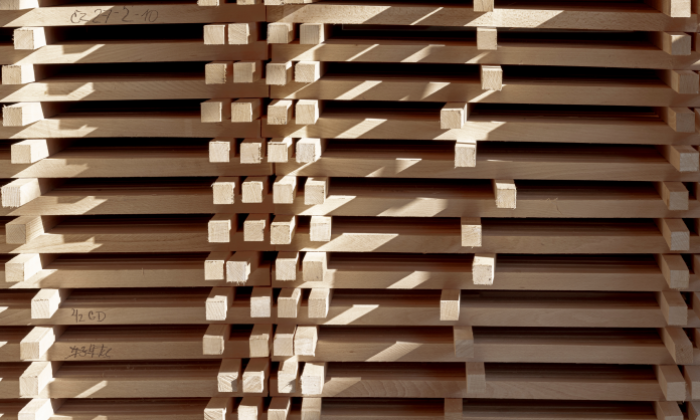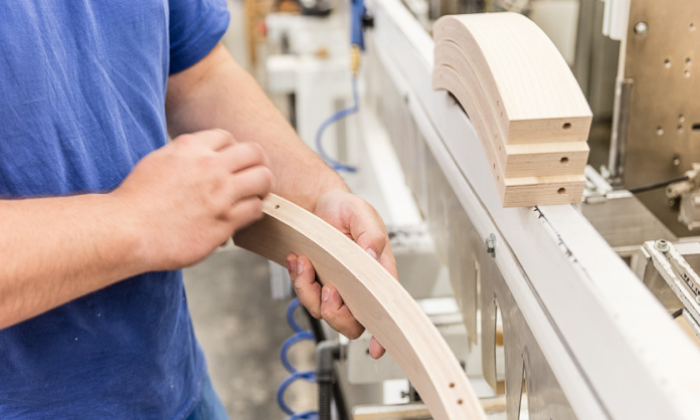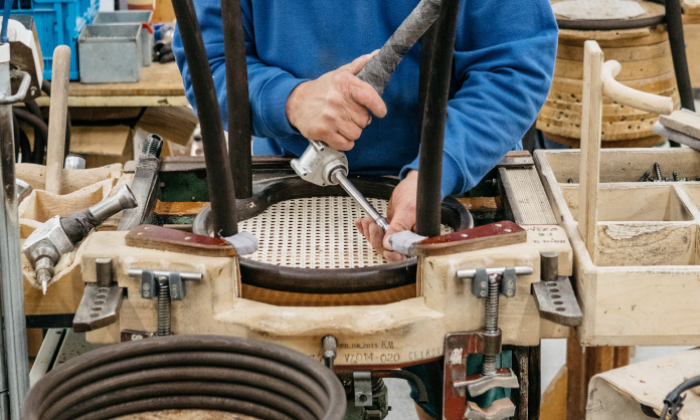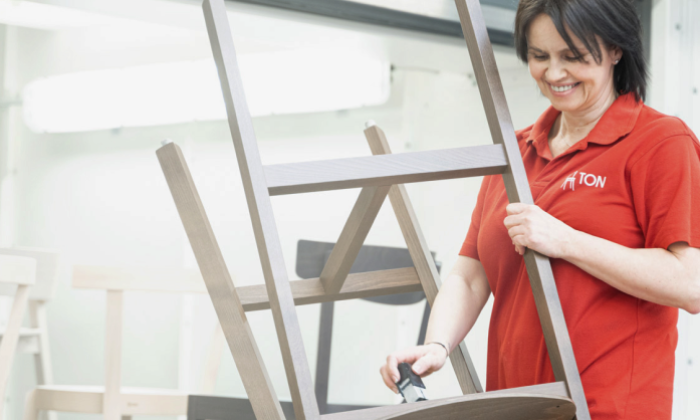
Design and concept
The entire production process begins with our designers, who carefully craft the
design of each piece of furniture. They draw inspiration from tradition, current
trends, and functional requirements to ensure that the final product combines
aesthetics, comfort, and practicality. Thanks to their work, every Ton product
unites unique design with functionality tailored to the needs of our customers.

Selection and preparation of wood
Each piece of wood undergoes a careful selection process to meet high standards
of strength, flexibility, and aesthetics. The wood comes from sustainable
sources and is thoroughly inspected before production begins. Steaming the
material prepares it for bending – a key process that gives the wood its
characteristic shape and durability.

Woodbending
A unique bending technique, perfected in our factory for over 160 years, gives
the wood its iconic shape. The combination of traditional handcrafting and
modern machinery ensures both precision and consistency. This step transforms
the wood into the fundamental building block of each product and is an essential
part of our brand identity.

Sanding and surface finishing
Smoothness and precise detailing are achieved through meticulous hand sanding,
where every millimeter is carefully worked. This creates the perfect foundation
for applying surface finishes and ensuring a flawless appearance. The process
completes the unique texture and aesthetic of each piece of furniture.

Finishing and upholstery
Each piece of furniture is protected and refined with a precise surface finish,
offering a wide range of options – from matte lacquer to durable colored
coatings. For added comfort, we offer upholstery in a selection of fabrics and
leathers, combining elegance with everyday practicality. This stage gives each
product its unique look and customizes it to meet the needs of our customers.

Assembly
n the assembly phase, each component is joined with precision to ensure
stability and functionality. This process combines the craftsmanship of skilled
hands with modern technology, allowing for perfect alignment of all parts.
Assembly completes the overall construction of the product.

Quality control
Quality is carefully monitored through five key stages – from wood selection
and bending to final assembly. The last inspection takes place before shipping,
during which each piece of furniture is evaluated for durability, ergonomics,
and aesthetic finish. This rigorous process ensures that every product meets
Ton’s highest standards.






